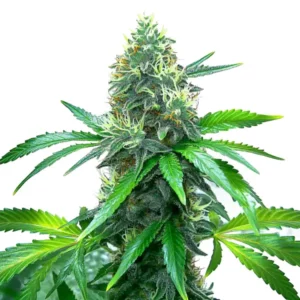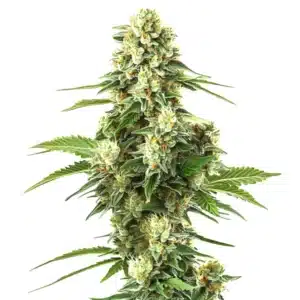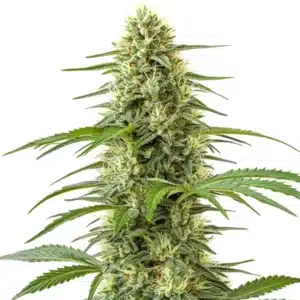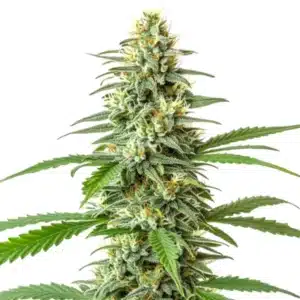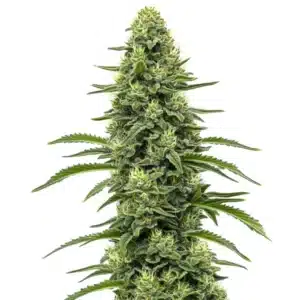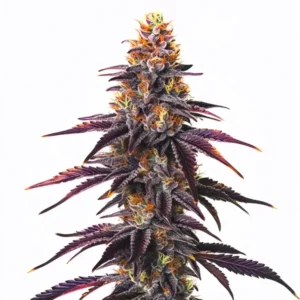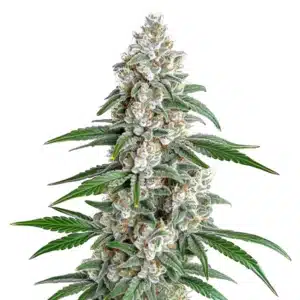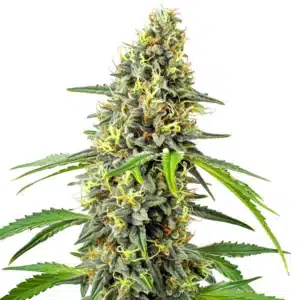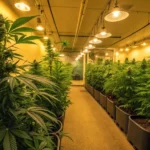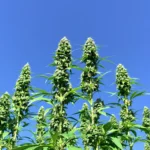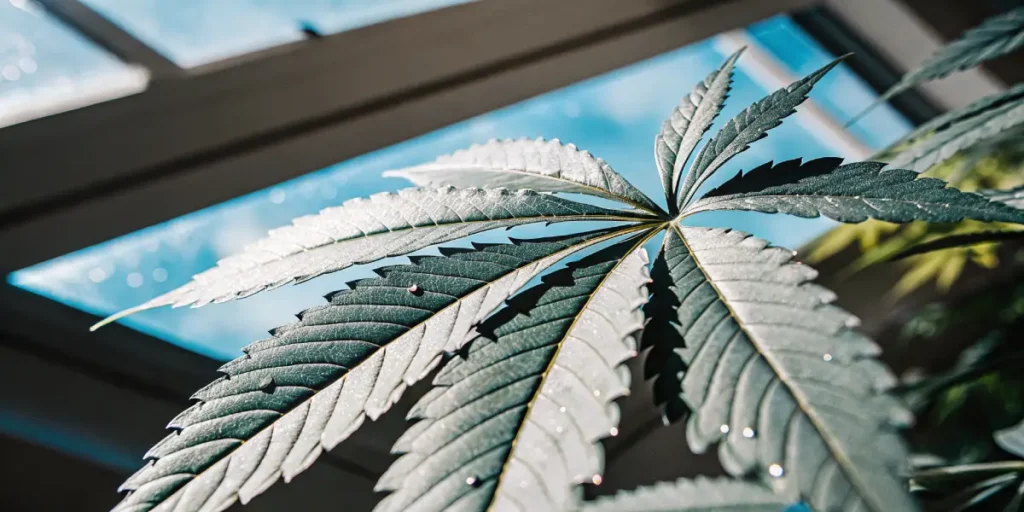
Plant Transpiration Explained for Cannabis Growers
Transpiration is a key process that plays a vital role in the growth and health of cannabis plants. For those stepping into the world of cannabis cultivation, understanding how this process works can be a game-changer. Plant transpiration explained for cannabis growers means recognizing that it’s essentially how plants “breathe.” They take in carbon dioxide and release oxygen, much like we do, but the process involves water loss from the leaves, which is crucial for nutrient uptake.
In cannabis cultivation, the plant transpiration process is essential for maintaining plant health. Transpiration helps with the movement of water and nutrients from the roots to the leaves. As water evaporates through tiny openings called stomata, it creates a vacuum that pulls more water and nutrients upwards. This is why proper watering and humidity control are crucial in your growing space.
Recommended Strains
Blue Dream
|
|
THC | 17% - 24% (Medium) |
|
|
Type | Feminized |
|
|
Yield | High |
|
|
Phenotype | 50% Indica / 50% Sativa |
OG Kush
|
|
THC | 20% - 24% (Medium) |
|
|
Type | Feminized |
|
|
Yield | Medium |
|
|
Phenotype | 55% Indica / 45% Sativa |
Experienced growers know that optimizing transpiration for cannabis yield can lead to more robust plants. When transpiration is balanced, plants can absorb nutrients effectively, supporting their overall growth. Strains like Blue Dream from Blimburn Seeds thrive in environments where transpiration is well-managed, leading to impressive yields.
Plant Transpiration Process in Cannabis Cultivation
The plant transpiration process in cannabis cultivation involves several factors that need attention. First, the water uptake by roots is essential. When roots absorb water, it travels up the plant, carrying vital nutrients necessary for growth. This journey ends at the leaves, where water exits through the stomata.
Knowing transpiration in cannabis plants also involves monitoring environmental conditions. Temperature, humidity, and light all play significant roles in how efficiently a plant can transpire. High temperatures increase the rate of transpiration, which can be beneficial or detrimental, depending on other factors like humidity and water availability.
Besides to environmental factors, the age and stage of the cannabis plant will affect transpiration rates. Young plants may transpire differently compared to mature ones, and recognizing these differences is crucial for growers. Adjusting techniques according to the plant’s life stage can enhance growth and yield.
Another key aspect of the plant transpiration process in cannabis cultivation is soil composition. Well-drained, nutrient-rich soils support healthy root systems, which in turn facilitate better transpiration. Choosing the right growing medium can make a significant difference in how well your plants manage water and nutrient uptake.
How Transpiration Affects Cannabis Plant Growth
How transpiration affects cannabis plant growth is directly tied to the plant’s ability to collect and transport nutrients. When transpiration is optimal, plants receive a steady stream of nutrients and water, promoting lush growth. However, if the process is hindered, nutrient deficiencies can arise, stunting growth and reducing yield.
Balancing the transpiration rate is crucial. For instance, if a cannabis plant is transpiring too quickly due to high temperatures and low humidity, it can lead to wilting and stress. Adjusting the environment by increasing humidity or reducing temperature can help maintain balance and keep plants healthy.
The importance of understanding transpiration in cannabis plants cannot be overstated, as it is directly linked to their photosynthetic efficiency. When plants transpire effectively, the stomata can regulate gas exchange more efficiently, allowing for better carbon dioxide intake and oxygen release, thus enhancing energy production.
Furthermore, how transpiration affects cannabis plant growth extends to its influence on plant metabolism. Proper transpiration ensures that metabolic processes occur smoothly, facilitating better energy absorption and distribution throughout the plant. This leads to stronger, more resilient plants that can better withstand environmental stresses.
Promos & Deals
Cannabis Grower Guide to Plant Transpiration
For a cannabis grower, a guide to plant transpiration can be invaluable. Start by monitoring the humidity levels in your grow room. Ideal humidity levels vary at different growth stages, with seedlings preferring higher humidity and mature plants thriving in lower humidity.
Temperature control is another critical aspect. Keep temperatures within the optimal range for the specific cannabis strain you’re growing. Strains like OG Kush from Blimburn Seeds prefer a stable environment to maximize their growth potential.
Implementing a cannabis grower guide to plant transpiration also involves understanding how air circulation impacts transpiration. Good airflow helps remove excess humidity around leaves, preventing diseases and promoting healthy transpiration rates. Fans and ventilation systems can be crucial tools for this purpose.
Moreover, maintaining clean grow spaces is part of effective transpiration management. Dust and debris can clog stomata, impairing the plant’s ability to transpire efficiently. Regularly inspecting and cleaning your grow area can help ensure that your plants maintain optimal gas exchange capabilities.
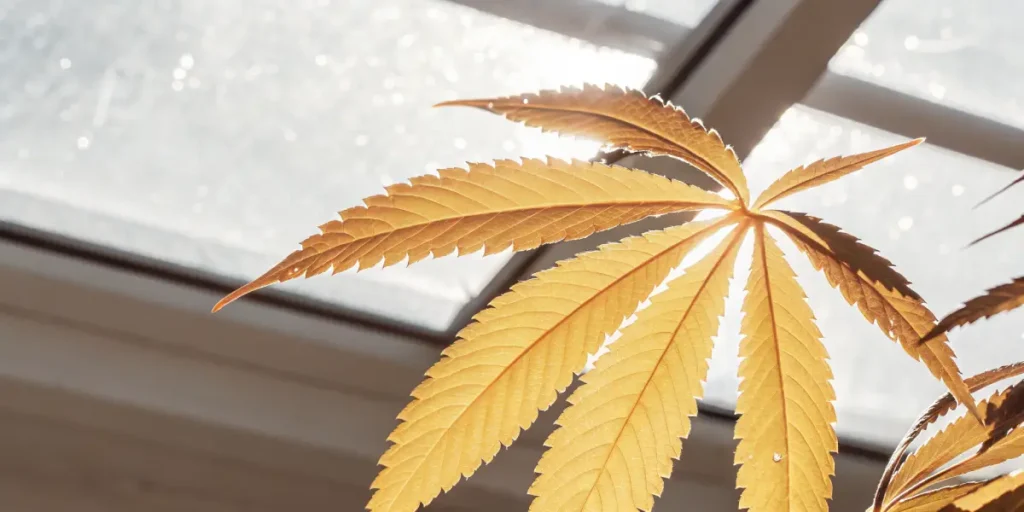
Optimizing Transpiration for Cannabis Yield
Optimizing transpiration for cannabis yield involves a few practical steps. First, ensure your watering schedule matches the plant’s needs. Overwatering can lead to root rot, while underwatering can cause nutrient deficiencies. Both scenarios negatively impact transpiration.
Using tools like hygrometers and thermometers can help track the environmental conditions in your grow space. By keeping an eye on these parameters, you can make informed adjustments to improve transpiration rates. Proper airflow is also essential, as it helps with the exchange of gases through the stomata.
To truly optimize transpiration for cannabis yield, consider the role of foliar feeding. This technique allows growers to supply nutrients directly to the leaves, aiding in nutrient uptake when root absorption may be compromised. It can be a valuable strategy in environments where soil conditions are less than ideal.
Further, experimenting with different lighting setups can also influence transpiration rates. Adjusting light intensity and duration can help mimic natural conditions, encouraging healthier transpiration. Knowing how light interacts with plant transpiration explained for cannabis growers can lead to more tailored and effective cultivation techniques.
FAQs
Why is transpiration important for cannabis plants?
Transpiration is crucial for cannabis plants because it aids in the movement of water and nutrients from the roots to the leaves. This process is vital for photosynthesis, which is how plants produce the energy needed for growth. Without efficient transpiration, cannabis plants would struggle to access the nutrients required for healthy development.
Moreover, transpiration helps regulate the plant’s internal temperature, preventing overheating. This is especially important in controlled environments where temperature spikes can occur. By ensuring proper transpiration, growers can maintain plant health and optimize yields.
Additionally, knowing transpiration in cannabis plants underscores its role in maintaining cellular pressure. This pressure helps keep plant structures firm, which is crucial for proper growth and development. Without sufficient pressure maintained by transpiration, plants may become weak and droopy.
Transpiration is also linked to a plant’s ability to detoxify itself. Through the process of water movement and evaporation, harmful substances can be expelled from the plant system, contributing to overall plant resilience and health. This detoxification process is another reason why keeping transpiration rates optimal is beneficial.
How can I tell if my cannabis plants are transpiring properly?
Signs of proper transpiration include healthy, robust growth and leaves that are neither too dry nor too wilted. If your plants are wilting or showing signs of nutrient deficiencies, it may indicate an issue with transpiration. Monitoring environmental factors like humidity and temperature can also provide insights into the transpiration process.
Using tools such as hygrometers to measure humidity and thermometers for temperature can help you assess whether your plants are in optimal conditions for transpiration. Adjustments to these factors can improve transpiration efficiency, supporting overall plant health.
Visual inspection is another effective method to determine if transpiration is occurring correctly. Look for leaves that are vibrant in color and free from any spots or discoloration, as these can be indicators of nutrient-related issues stemming from poor transpiration.
Furthermore, the weight of your pots can be a practical indicator of transpiration efficiency. If your plants are consuming water at a regular, healthy rate, the pots should gradually become lighter between waterings. This consistent water usage is indicative of proper transpiration.
What environmental factors affect plant transpiration?
Environmental factors such as temperature, humidity, and light intensity significantly affect plant transpiration. High temperatures can increase transpiration rates, while low humidity levels can lead to excessive water loss. Conversely, too much humidity can slow transpiration, affecting nutrient uptake.
Proper light intensity ensures that photosynthesis occurs efficiently, which is closely linked to transpiration. By balancing these environmental factors, cannabis growers can create optimal conditions that support healthy transpiration and, consequently, plant growth.
Wind and air movement also play a role in transpiration rates. Gentle breezes can enhance transpiration by moving the air around the leaves, aiding in water vapor removal, whereas stagnant air can lead to reduced transpiration and increased disease risk.
Soil moisture and composition further influence transpiration. Well-aerated, moist soils promote healthy root function and water uptake, which are essential for effective transpiration. Soil that is either too dry or waterlogged can disrupt this delicate balance, leading to plant stress.
Can transpiration rates vary between cannabis strains?
Yes, transpiration rates can vary between cannabis strains. Some strains are more resilient and can handle a wider range of environmental conditions, while others require specific settings to thrive. Understanding the needs of the particular strain you’re growing is crucial for optimizing transpiration.
For example, strains like Blue Dream may have different transpiration requirements compared to OG Kush. By tailoring your growing environment to the specific needs of the strain, you can enhance transpiration rates and improve yields.
The genetic makeup of a cannabis strain dictates its physiological traits, including stomatal density and leaf structure, which in turn influence transpiration rates. Indica and sativa strains, for instance, may exhibit differing transpiration behaviors due to these inherent genetic differences.
Moreover, selective breeding has led to the development of hybrid strains with unique transpiration characteristics. Knowing these characteristics can help growers select the best strains for their specific growing environments, maximizing both transpiration efficiency and plant yield.
How does plant transpiration impact nutrient uptake in cannabis?
Plant transpiration directly impacts nutrient uptake in cannabis by facilitating the movement of water and nutrients from the roots to the leaves. This process ensures that essential nutrients reach all parts of the plant, supporting robust growth and development.
An imbalance in transpiration can lead to nutrient deficiencies, which manifest as discolored leaves and stunted growth. By maintaining an optimal transpiration rate, cannabis growers can enhance nutrient uptake, leading to healthier plants and better yields.
Transpiration also affects the plant’s ability to transport sugars and other organic compounds produced during photosynthesis. Effective transpiration ensures these compounds are evenly distributed, fueling growth and energy storage throughout the plant.
Additionally, knowing the relationship between plant transpiration explained for cannabis growers highlights the importance of water quality in nutrient uptake. Poor water quality can lead to the accumulation of salts and other harmful substances, potentially hindering transpiration and nutrient absorption.



